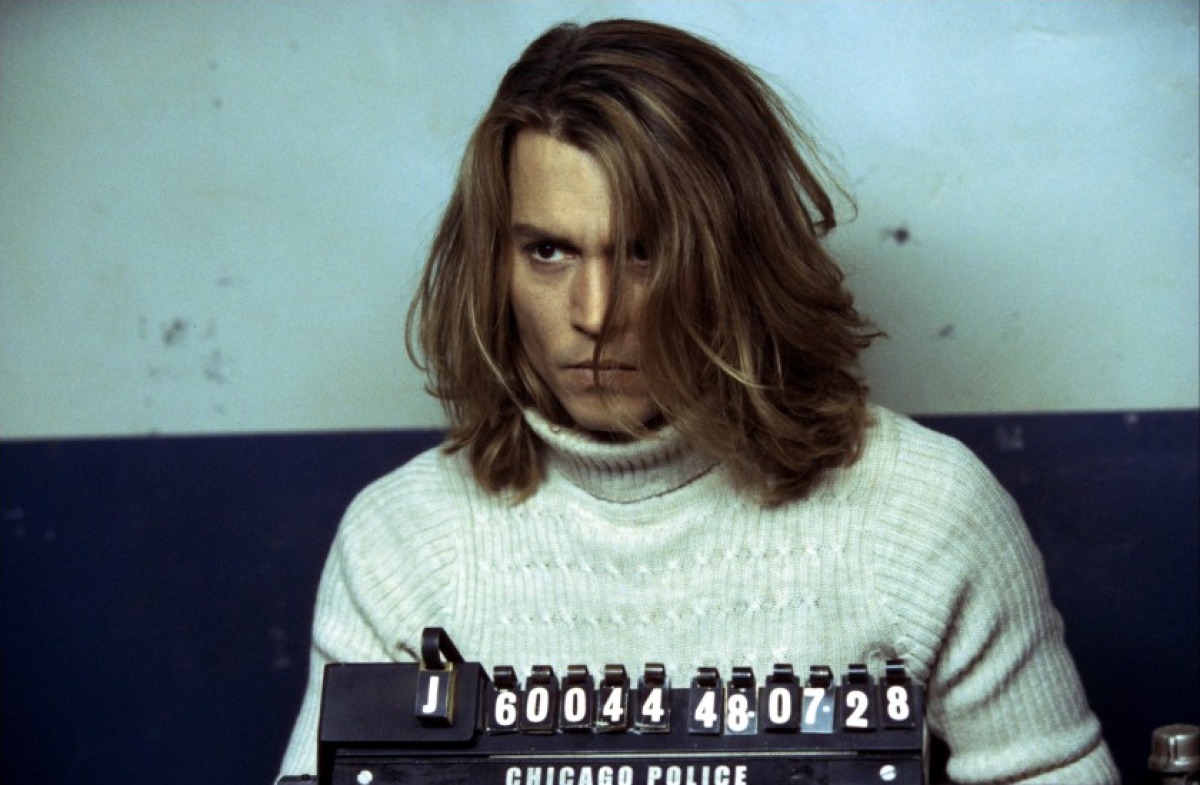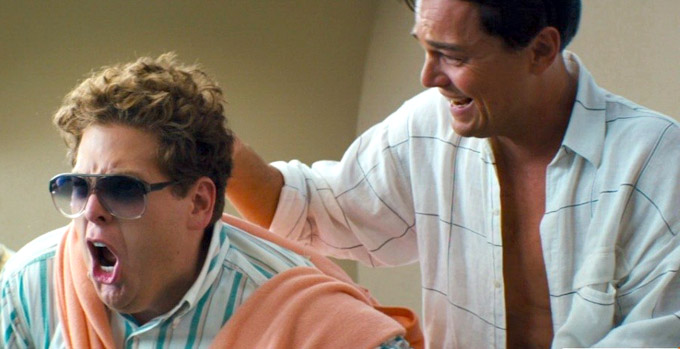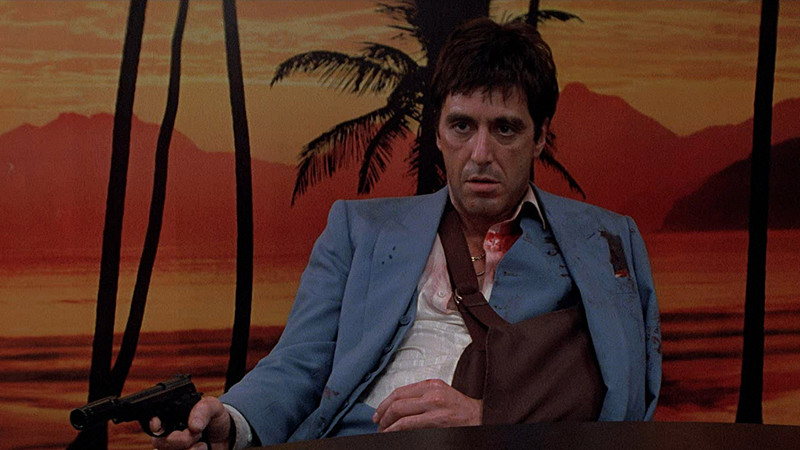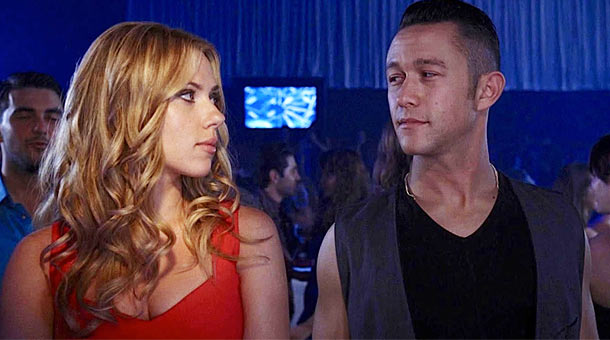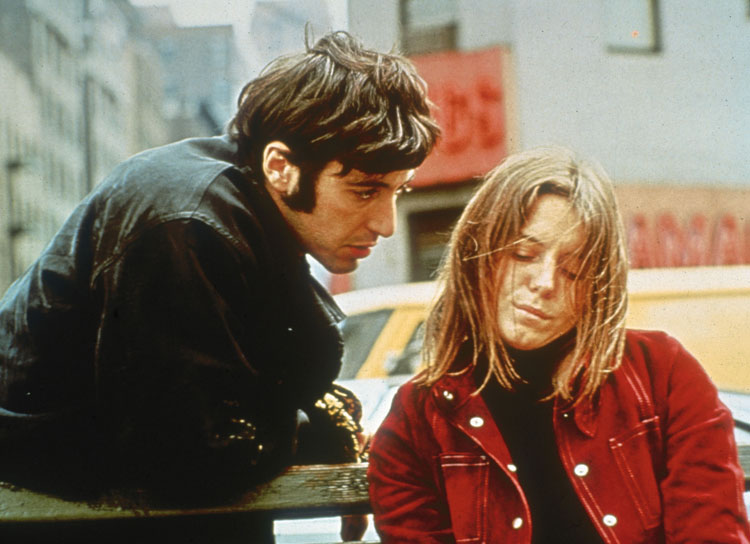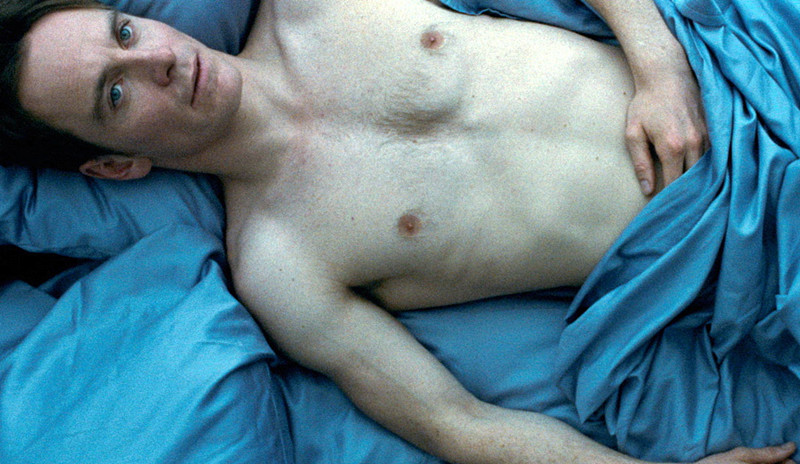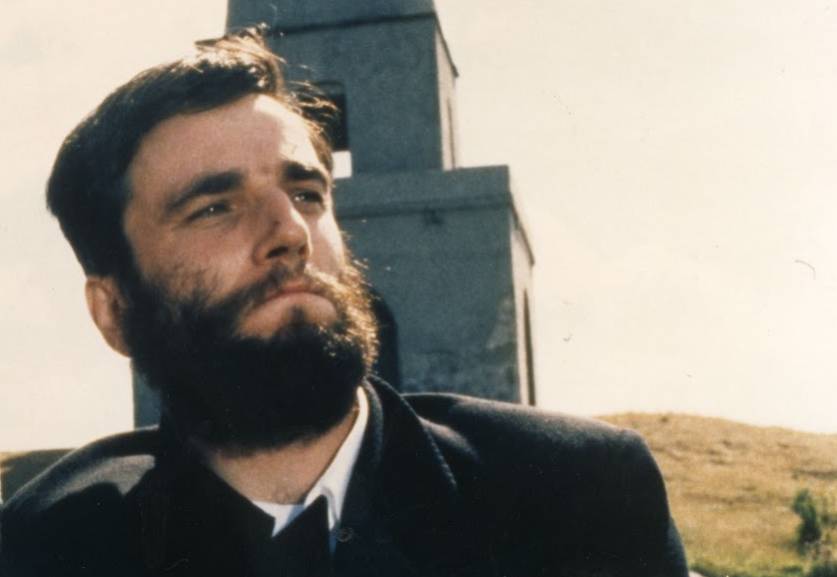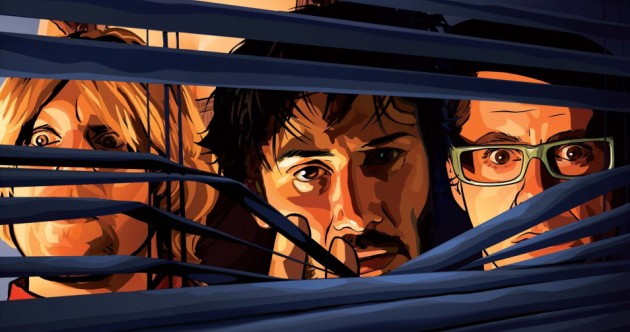11. Blow (2001)
This biopic is adapted by Bruce Porter’s 1993 book “Blow: How a Small Town Boy Made $100 Million with the Medellin Cocaine Cartel and Lost It All” and focuses on George Jung (Johnny Depp), a man who imported around 85% of all the cocaine in America in the 1970s.
While he starts off easy by smuggling in weed to sell to College kids through his stewardess friend (Franka Potente) in her custom free luggage, it quickly develops into a bigger game of cocaine, which everybody suddenly needed. Soon George starts making real money as a key distributor for his new friend Pablo Escobar (Cliff Curtis) and the Medellin drug cartel of Colombia.
However, as years pass he becomes replaceable, wanted for arrest and distant from his junkie wife (Penelope Cruz) and their daughter (Emma Roberts).
The rise and fall of this man is predictable but nevertheless interesting, especially since Johnny Depp manages to illustrate George’s personal and business struggles without copying the drug king-pin “Scarface”.
12. Leaving Las Vegas (1995)
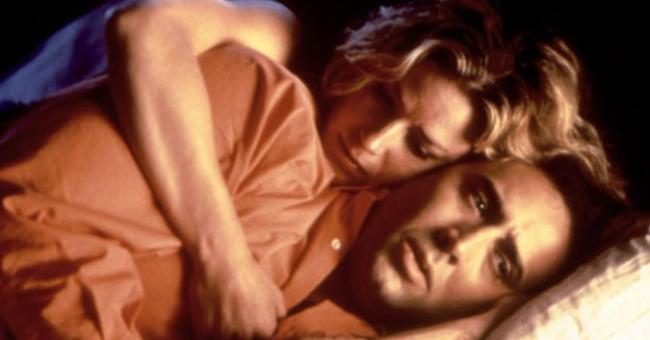
Based on a semi-autobiographical novel of the same name by John O’Brian, Mike Figgis adapted it into a film that is realistic, despairing and hopeful in that these two fearful people find each purpose in each other to change, however, whether that is enough compared to the compulsive need of addiction is determined by them.
Ben Sanderson (Nicolas Cage) is a Hollywood screenwriter who loses everything due to his alcoholism. Ben moves to Las Vegas with the intent of just drinking himself to death away from everyone he knows. He meets Sera (Elisabeth Shue), a prostitute with good intentions working for an abusive pimp, by nearly running her over while drunk driving.
They form a strange romance as he pays her to stay with him, but does not sleep with her and they both agree to never criticize one another for their behaviors. Neither one wants to be judged, Ben wants no one else to tell him to stop drinking and Sera is tired of everyone disapproving her chosen occupation. However, when they start caring more for each other, they can’t help but worry and try to help.
While not necessarily a love story, at least not a stereotypical one, the two build their relationship on mutual despair and resistance to change. They are two self-destructive people who are convinced that they have lost the battle and the only reason to keep on going is to try to save the other one from drowning.
13. The Wolf Of Wall Street (2013)
Adapted by Terence Winter (creator and writer on “Boardwalk Empire”, executive producer and writer on “The Sopranos”) from the memoir by the former stockbroker turned motivational speaker Jordan Belfort, the film is translated into a shameless and exhausting comedy-drama biopic about money, drugs, sex and more money.
Originally running at about four hours and then being cut down to three, the film remains both exciting and revoltingly abashed as the minutes pass. With constant film speed shifts between slow motion Quaalude binges and quick cut montages of Jordan’s quick rise into fortune through his penny stock scam, Scorsese keeps this movie constantly running on high. Every scene is pumped with a rage of testosterone and unfailing stamina.
Narrated by Leonardo DiCaprio who stars as Jordan, he breaks the fourth wall and continuously interacts, explains and attempts to rationalize his actions, no matter how outrageous.
However, DiCaprio’s not the only one with incredible range in this film – with the teenage comedy star Jonah Hill as his second -in-command, Australian newcomer Margot Robbie who excellently lays out the thickest Brooklyn accent possible, Oscar winning French actor Jean Dujardin, Matthew McConaughey, Kyle Chandler, Joanna Lumley and even Rob Reiner as Jordan’s foul-mother father.
14. Scarface (1983)
Scarface borrows its title form Howard Hawks’ 1932 movie based on Al Capone’s career. Although not a remake, both films has sparked controversy over their “excessive” violence which helped illustrate the rise and fall of a gangster.
Al Pacino never tries to make the drug kingpin Tony Montana sympathetic. His struggles of coming to America and then being placed in a refugee camp are never milked so as to gain some understanding or explanation as to why he would do the things he would do.
Instead Pacino makes Montana a flawed, ruthless Cuban punk with whom people relate to in the most basic sense. Montana wants the classic American dream. He wants the huge mansion, the big pool, the blonde bombshell, the servants, and the power to be able to do whatever he wants – and becoming a big drug dealer gives him all that, so why wouldn’t he do it if he’s blessed by not being restrained by the fear and the morals most people have?
Only a fool gets hooked on his own goods. Cocaine is a big game, especially so in the 80s, and Tony slips up, which is understandable considering the amount he has together with his severely, coked out wife (Michelle Pfeiffer). His downfall is predictable, tremendously pathetic and sad but he does not go down without a fight.
15. Don Jon (2012)
Joseph Gordon-Levitt writes, directs and stars as Jon Martello, whose life is based on a solid routine of excessive masturbation to porn, clubbing and hooking up with girls (who must be at least an 8 on his chart), going to Church to confess for his “out of wedlock activity” and training at the gym while praying in repentance.
Originally rated NC-17 and entitled “Don Jon’s Addiction” when it hit Sundance, it was compared to Steve McQueen’s “Shame” that also deals with sex addiction. However, Jon is incredibly attached to the audience while Michael Fassbender in “Shame” is the complete opposite. Jon narrates everything he does, everything he wants to do and complains when things don’t go his way.
If anything , Jon is way more addicted to porn than actual sex, which he considers much less satisfying. He prefers watching porn alone than having sex with an actual girl, considering the latter to be too distracting with tight condoms that ruin his mood, girls who only do missionary and even if they try oral sex; he is critical of their technique and hates reciprocating it. He can never “lose (him)self in them like (he) does in porn”.
16. The Panic In Needle Park (1971)
Drug addiction is not something clean cut and simple. Odds are if you start out by popping in your mouth, pretty soon you’ll be snorting it and finishing the cycle by popping your skin. Every drug comes with its own compulsions and habits surrounding the act of ingesting it. In “The Panic in Needle Park,” the needle seems to get as much screen time as the leads, with around half a dozen close-ups of it penetrating the flesh and oozing out blood.
The film, although hard hitting with plenty of loaded topics, is essentially a love story between the doe-eyed and quiet Helen (Kitty Winn in her Cannes Best Actress Role) and Bobby (Al Pacino, in his first major role), a street-wise, cocky kid who steals, and sells what he can get, including drugs and tv sets.
The start of their relationship is unconventional and kind of tragic but oddly sweet. Helen is in a relationship with the cheap Marco who insists on bartering for Helen’s abortion, which obviously turns out to be insanitary and inept and leads to Helen becoming sick. But he doesn’t mind because he didn’t spend any money.
When Marco is out, the small-town drug dealing but gentlemanly Bobby comes round since Marco owes him some cash and notices Helen’s illness and shows genuine concern for her. When Helen is eventually hospitalised due to profuse bleeding, Bobby shows up again and tells her that Marco left and offers her somewhere to stay when she gets better.
Soon, she becomes a heroin addict like Bobby (who insists that they are only “chipping”) and everyone else at “Needle Park” (the nickname of Sherman Square on New York City’s Upper West Side near 72nd Street and Broadway), and both their addictions lead them to spiral down into a vortex of betrayal and disappointment.
17. Shame (2011)
There’s sadness in Steve McQueen’s film that is hard to replicate. Maybe it’s Brandon’s (Michael Fassbender) complete detachment from emotional relationships or his subsequent loneliness, but his emptiness is clearly translated through the film’s monochromatic palette, Harry Escott’s sharp score and the lack of any attempt to rationalize his addiction, which is rare in such films.
Brandon hardly needs to try hard to find a woman who is willing to sleep with him to satisfy his compulsive urge. He can just look at a girl on the subway, an engaged one at that, and she’ll get all flustered by his hypnotizing glare and good looks. But despite this, he still needs more than any woman can provide him with. He seeks relief not only from porn, of which he hoards a lot of on his work computer, but also from prostitutes, drugs and anonymous sex clubs.
His shame leads to self-loathing. He is not worthy of his sister’s (Carey Mulligan), nor anybody’s, love or attention. However, when he closes himself off from others, he is left a cold, emotionless shell who does not help when others may need it.
18. My Left Foot (1989)
There are many excuses to start drinking, most of which are stretched as an attempt to justify the self-imposed intoxication, but some are hard to imagine surviving completely sober. “My Left Foot: The Story of Christy Brown” is one of these heartbreakers. The versatile Daniel Day-Lewis stars in his breakout performance as the Irish Christy Brown, a man born with cerebral palsy and who could only control his left foot.
While everyone in his Dublin slum assumed that he was also intellectually disabled (since he could not speak to translate his perfectly fine thoughts), he spent the first 10 years of his life being treated as such. That is, until he managed to pick up a piece of chalk and write the word “mother” on the floor, showing that he was normal. Despite their hurdles, Christy grew up in a very close and loving family, but this didn’t stop him from becoming severely depressed from his condition.
Seeing his body as a prison and whisky as a key, Christy soon develops a taste for the mental numbness and a way to relieve his frustration, even if for a short amount of time. Of course, due to his physical limitations, his booze had to be bought and given to him, meaning that winning each drink was met with constant guilt-bearing manipulation to whoever had the task of getting him drunk to the point of passing out.
The film is hardly meant to be sympathetic with Christy constantly fighting anyone who tries to help with slurred, tight vulgarities and is as stubborn and difficult as anyone in his situation would be. However, even though his story can inspire people to overcome their problems and make something great, the guy himself is depressed despite his successes with painting and writing his own autobiography with only his left foot.
The film won the Academy Award for Best Actor, Best Actress in Supporting Role and was nominated for Best Picture, Best Director and Best Adapted Screenplay, along with many other accolades. The film is also known for Day-Lewis’ first full-on attempt in method acting, during which he refused to break character and even remained in a wheelchair (which other people had to push, since his character was unable to do so himself) when there were no cameras rolling.
19. Gia (1998)
Considered to be Angelina Jolie’s breakout performance, HBO’s “Gia” chronicles the short life of model Gia Maria Carangi throughout her quick rise to the forefront of the modeling industry as well as her self-destructive patterns that not only destroyed her relationships and career, but also took her life. The rise and fall tale is made all the more vivid by having Jolie play Gia since both emit a certain mix of boldness, confidence and desperation.
After signing with Wilhelmina Cooper’s (Faye Dunaway) agency at seventeen, she immediately became a well-established model with her iconic Chris von Wangenheim nude, chain-link fence shot and multiple covers of Vogue and Cosmopolitan. As most Studio 54 regulars, her coke addiction was reasonably tame until her mentor, Wilhelmina, died. Soon coke turned into heroin, and her arms became needle pins that shriveled into cracked, red spider limbs that photographers had to airbrush.
Jolie won a Golden Globe Award, a Screen Actors Guild Award and many other accolades for her performance as the uninhibited self-destructive supermodel. And if her breakthrough wasn’t enough, there’s an eleven year old Mila Kunis who portrays Gia as a kid.
20. A Scanner Darkly (2006)
“A Scanner Darkly” is Richard Linklater’s second animated film (the first being the philosophical and existential docudrama “Waking Life”) made mainly for adults that is set in a near-future dystopia in the midst of a new drug addiction epidemic.
Based on the original author’s (Philip K. Dick) personal drug experiences, the story focuses on an incredibly addictive and powerful hallucinogenic new drug, “Substance D” that has led to approximately 20% of the total population to be addicted. To recover from the war on drugs, the U.S government created a extremely complex and invasive surveillance system to track down the traffickers and the creators of the drug.
Bob Arcter (Keanu Reeves) is an undercover agent whose task is to infiltrate the supply chain and discover the source, but along the way has become addicted to the drug himself, leaving his brain to degrade into ambiguity as he becomes unsure of who he is.
Living with two other drug-addicts Luckman (Woody Harrelson) and Barris (Robert Downey Jr.), they spend their time having long, paranoiac conversations and getting their fix from Arcter’s main target, Donna (Winona Ryder) who he develops feelings for. While Arcter is at the police station, all officers must wear “scramble suits” which protect their true identities from each other, and don’t exactly help with Arcter’s confusion about everything.
While this film is animated, all the scenes were acted out in real life and was then transferred to “Quicktime” and animated with “Rotoshop”, where they traced over the live action footage, frame by frame.
Due to the animation process, Robert Downey Jr. wrote most of his lines down on post-it notes and scattered them around the set so that he could read off them while filming a scene and during post-production, the rotoscoping team just animated over the notes to remove them from the film. While principle photography only took 23 days, post-production took a year and a half to finish the film.
